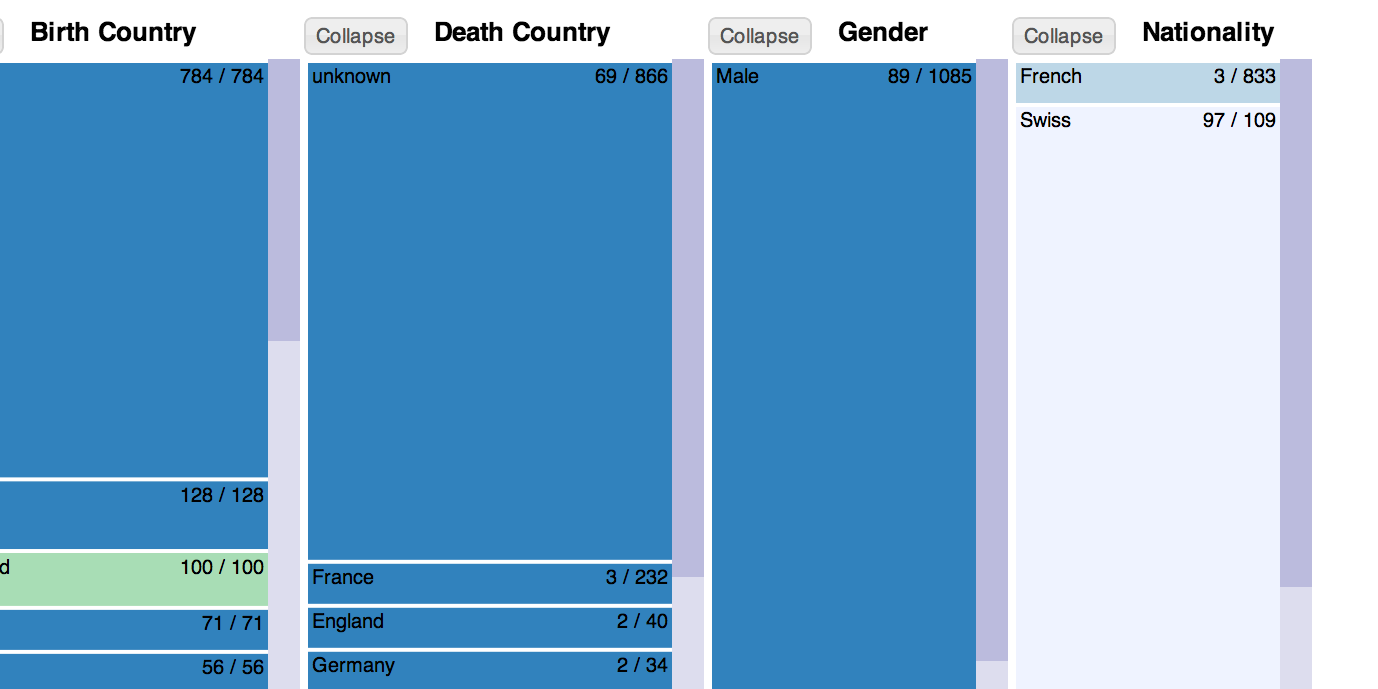
2013
A multi-dimensional facet-filter tool based on Elastic Lists, combined with a timeline and gallery display of results.
Demo-->
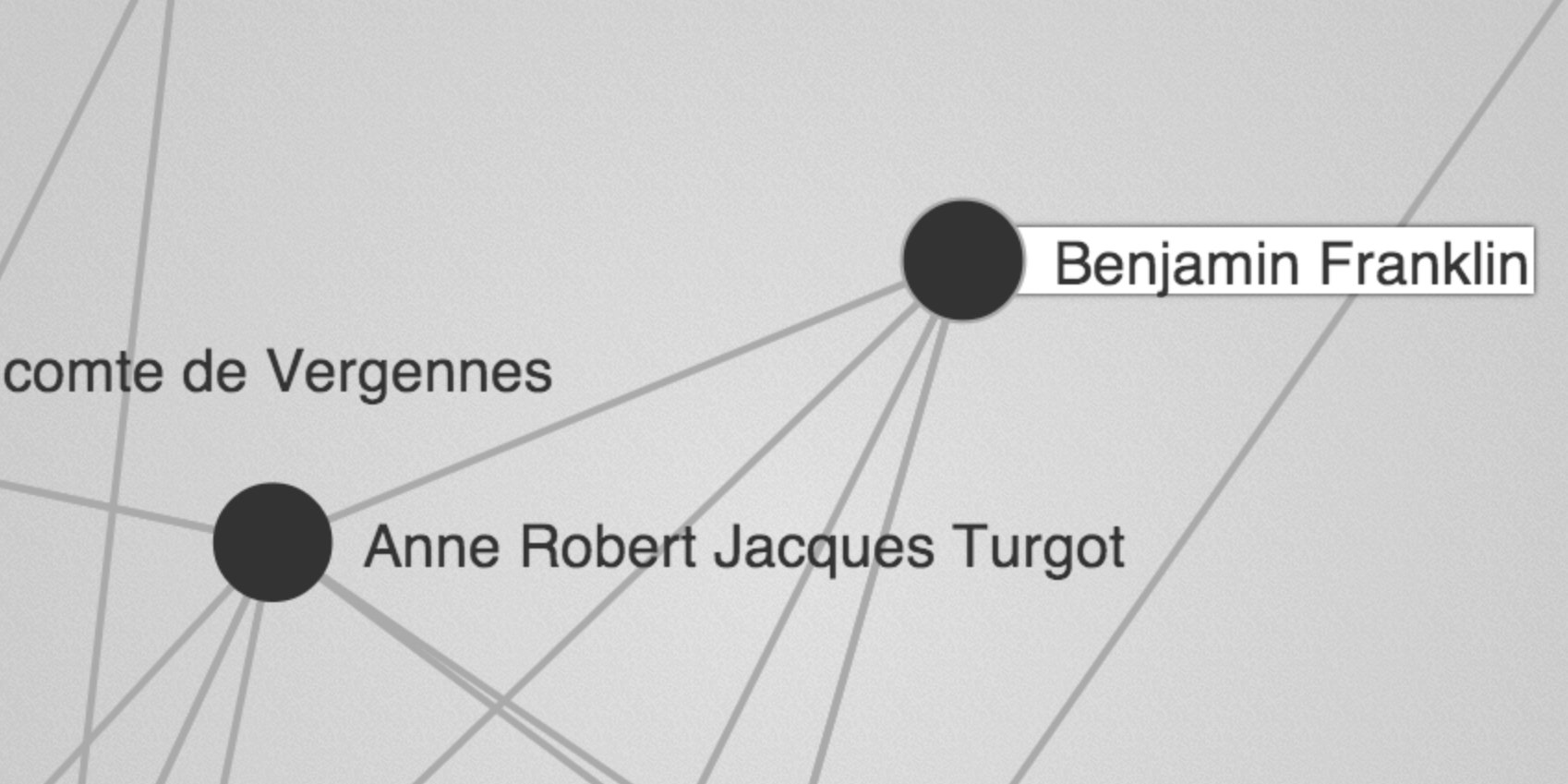
2012
A network exploration tool that brings into play both explicit connections (through correspondence, for example) and possible networks based on collocation and affiliation.
Demo

2012
A tool that emphasizes research questions as a starting point for visualizing data; generating layered maps based on complex queries.
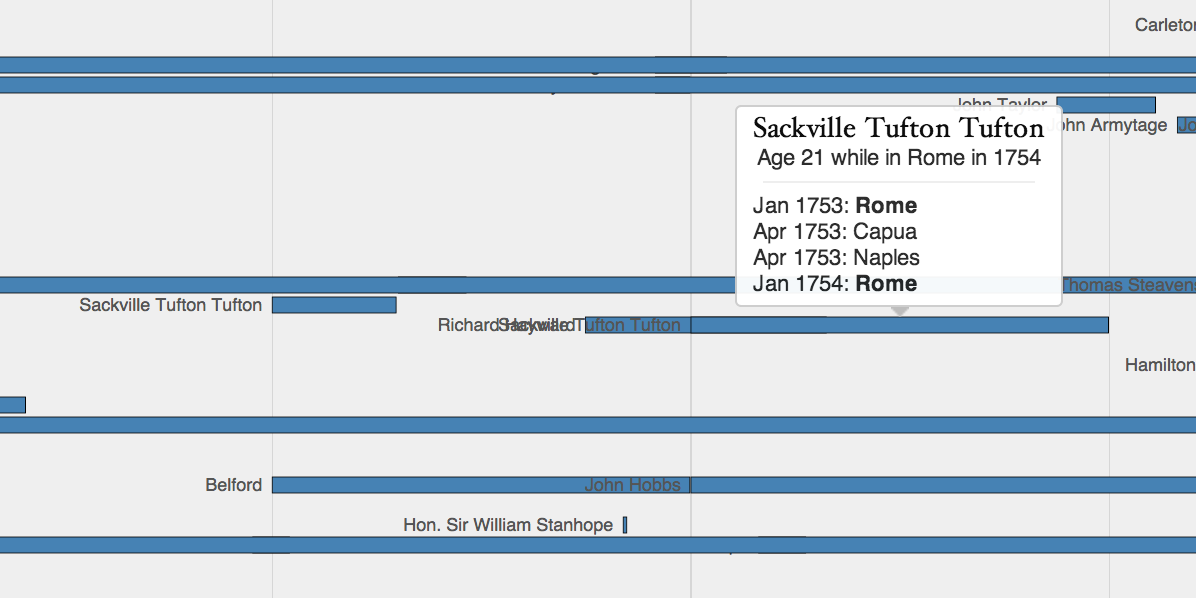
2011
Inspired by Joseph Priestley's 'A Chart of Biography' (1763), this chart displays the length of stay of visitors by city on a brushable timeline allowing scholars to see who was in the same city at the same time.
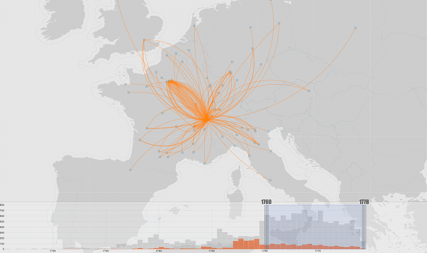
2010
This point to point map visualization was developed to show 'missing' data. It was the first in a series of experiments in visualizing uncertainty and complexity in data.
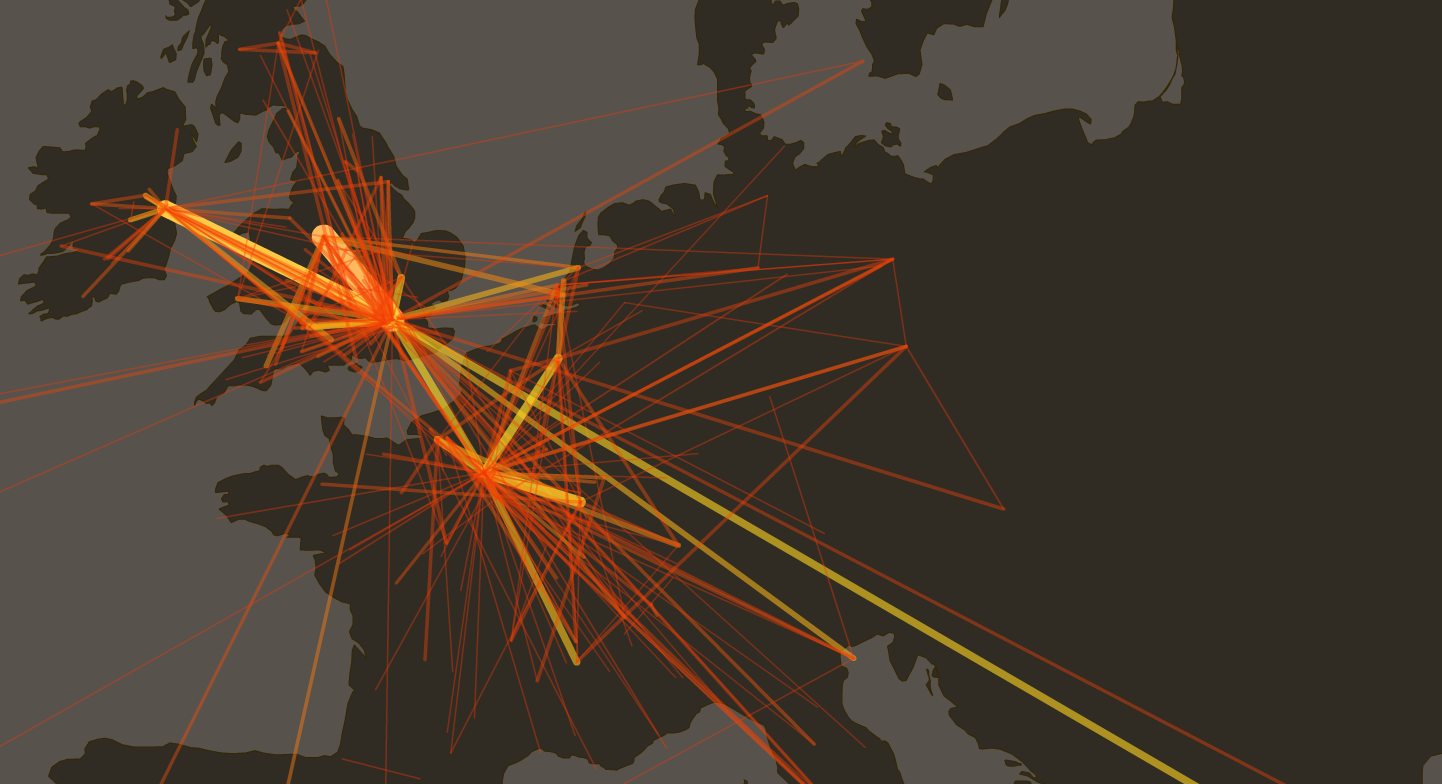
2009
The first visualization experiment for Mapping the Republic of Letters. Built by Jeff Heer's students in CS448b.
Demo